The Endless Mission and the History of UGC, Part 2>>May 16, 2019
Welcome back! Last week, we did a quick overview of what User Generated Content is, the many forms it can come in, and some tips on how to start making your own. Since you’re all still here (and didn’t run away screaming), that means it’s time to dive in and start looking at the history of UGC – where it came from, where it is now, and where it’s heading in the future. For this discussion we’ll be examining different types of “UGC-focused” games one at a time, looking at examples in rough chronological order. Ready? Let’s begin!
Games about Making Games
First up, there are Games about Making Games. The term may sound a bit… recursive, but the distinguishing aspect of these games is that the presentation still feels very game-like: The interface is streamlined for ease-of-use, usually for creating a specific type of game (and frequently it will explicitly be games or levels that you are creating). Assets are predefined or created using an in-game drawing tool rather than imported, and often based on some pre-established theme or style. While the ability to do some amount of coding or scripting may be included, it will be totally optional and players can create fully-detailed UGC without touching a line of code. Finally, the ability to share your creations with others will be one of the major selling-points, to the extent that playing other peoples’ creations will be given equal focus to making your own.
Pinball Construction Set (1983)
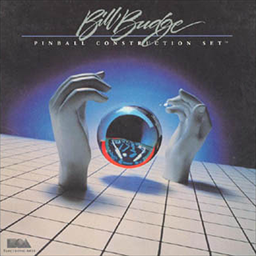
We talked about this game a bit last week, but it’s time to give it a proper introduction – Pinball Construction Set, created by Bill Budge in 1983, is considered one of the first games to put an emphasis on UGC in the form of creating your own pinball tables. In addition to having a full suite of pinball features you could drag and drop onto the table, the physics of the table, such as gravity or friction, could be adjusted as well.
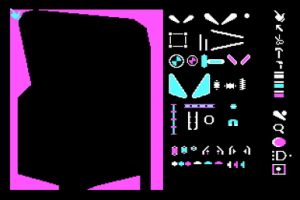
Despite being pretty darn primitive by today’s standards, PCS was absolutely revolutionary at the time it came out, earning massive sales, glowing reviews, and numerous awards. The publisher, Electronic Arts, would go on to create numerous pseudo-sequels from different authors, including Music Construction Set, Adventure Construction Set, and Racing Destruction Set. Even as recently as 2008, the game received honors at the 59th Annual Technology & Engineering Emmy Awards for the influence it had on gaming. Best of all, Budge himself shared the source code for the game on GitHub, allowing a whole new generation of gamers to experience a real classic. Check it out: https://github.com/billbudge/PCS_Atari800
LittleBigPlanet (2008)
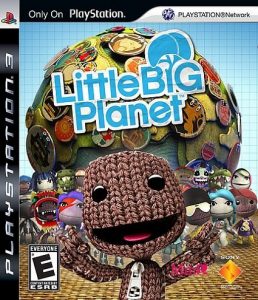
Despite the impact that PCS made upon release, it wouldn’t be until a quarter century later that the next major “game about making games” would be released, courtesy of Media Molecule. LittleBigPlanet puts you in the role of an adorable (and customizable!) little Sackboy or Sackgirl as they explore their creativity-fueled world in a sidescrolling platforming adventure. As you play, you collect various bits and bobs that you can then use for the game’s big draw – creating your own massive levels that you can share online.
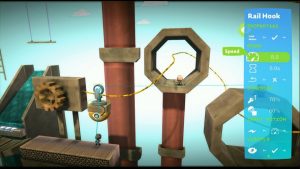
LittleBigPlanet did a lot to bring back games of this ilk in a huge way after their extended absence, and it received high acclaim from both fans and critics alike. The game would have numerous DLC packs and sequels, introducing new, even more detailed editing tools and features. While the first game you were more or less confined to making platformers, the sequels would make it easy to create games in a massive array of genres, not to mention a surprisingly detailed scripting engine for programming AI characters.

LittleBigPlanet was not without its flaws, even after the vast improvements its sequels brought – the real-time physics engine made it very hard to create games that required precision, as you were never quite sure if whatever crazy contraption you built would work properly every time, and the “Sackperson” aesthetic meant that every game had cutesy homemade look to it, even if you were trying to make, say, a sci-fi or horror game. Even so, the creations made in this game were nothing short of incredible. Media Molecule would go on to set their sights even higher with their next game, Dreams… which we will go into in next week’s article.
WarioWare D.I.Y. (2009)
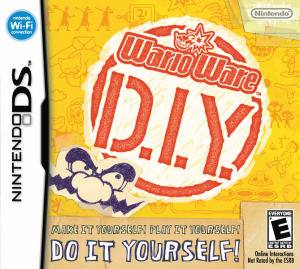
With LittleBigPlanet jumpstarting interest in UGC on a game-sized scale once more, it wasn’t long until other companies started getting in on the action. Nintendo was one of the first to introduce their own take on the concept, creating a UGC-focused version of their very popular and very weird WarioWare franchise.
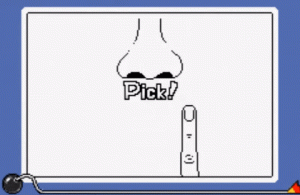
Trying to explain WarioWare to someone who’s never heard of it can be downright surreal, but let’s try it anyway: The ever-greedy Wario has decided to give up on his wild graverobbing “archeology” adventures and instead earn tons of cash by starting his own video game company. However, he’s taken the mentality of “quantity over quality” to its (il)logical extreme, as each game is only five seconds long. As such, the player is tasked with playing anywhere between 10 to 25 of these “microgames” in a row, having only scads of time to figure out what you’re supposed to do in each game (jump over a car, eat a hot dog, escape a rolling boulder, etc.) and then do it. As of D.I.Y., many of Wario’s employees from the previous games have left him due to… well… him being Wario, so now he has turned to you to help him make more microgames.
Due to the brevity of the microgames, D.I.Y. was able to give players a lot of control over the details of what they create. Players could create their own sprites and artwork, as well as compose completely original music for their microgames. The fact that the game was available on the Nintendo DS also meant that a lot of the more intricate work could be done using a stylus and touch screen, as opposed to relying on a controller like in LBP. However, the most unexpected addition was a very in-depth scripting system for coding your microgames. Not only was it surprisingly versatile while never being hard to use, the game even included a separate mode called the Dojo where you did exercises and solved puzzles involving the scripting system. That’s right: They turned writing the code itself into a game! How meta.
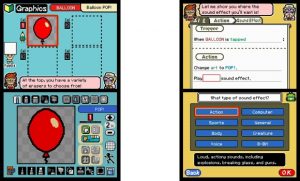
Unfortunately, while the game was well-received, it never got anywhere near the sales or popularity that LittleBigPlanet did. Being strictly limited to just five-second microgames put a serious hamper on what kind of stuff you could create. While more WarioWare games would be released, none of them would include the UGC that D.I.Y. introduced. Don’t worry, though, Nintendo wouldn’t give up on this concept entirely, as we’ll see in… oh… about three minutes from now.
Gamestar Mechanic (2010)

Alright, shameless plug incoming in 3… 2… 1… Did you know that The Endless Mission is not our first foray into game creation software? Back in 2010, E-Line Media teamed up with Institute of Play to create Gamestar Mechanic: A browser-based webgame about turning game players into game makers. Players would take on the role of Addison – a newcomer to the world of Factory 7 who wishes to climb the ranks and become a Master Mechanic. However, a rival mechanic has gone rogue, and it’s up to Addison to team up with other Master Mechanics to put a stop to it and save Factory 7. Along the way, Addison learns about the key elements of game design that are needed to create an enjoyable experience, and the player earns sprites that they can then use when creating their own sidescroller or top-down games. Created games can be published on the website for other users to play and leave comments and reviews on.

GSM differentiated itself from other games of its ilk by us choosing to focus on the educational side of game-making. The Quest mode where you earned sprites was very upfront about making each game you played through an opportunity to learn something about good game design, and while the program is available to everyone, it was created with the help of teachers with the specific intent to be used in classrooms around the world. Even the choice of platform for the game was deliberate – by making it a browser-based game, all one needs to play is a computer with an internet connection and Flash installed, something that any school computer lab can manage.
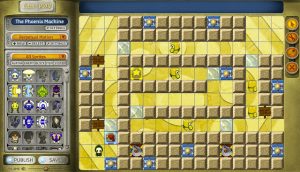
However, the same things that make the game accessible to the largest audience possible also limited the complexity in what we could do and what games we could allow users to make, and with Flash slowly getting phased out completely, Gamestar Mechanic will have to evolve in order to stay alive. Still, the game is Free-to-Start, and we’re always looking for new members in the community, so if you’d like a (very) small taste of what to expect from us in The Endless Mission, feel free to check out Gamestar Mechanic at https://gamestarmechanic.com/!
… Okay, shameless plug over. That wasn’t so bad, was it?
Super Mario Maker (2015)
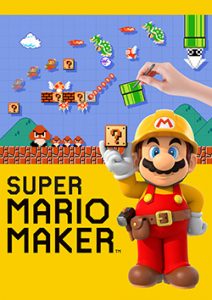
Hey, we said we’d get back to Nintendo soon enough.
Nintendo would return to the world of UGC in 2015 with the release of Super Mario Maker. As the name implies, Super Mario Maker was all about creating and sharing levels based on the Super Mario Bros. franchise of games. Four different games from the Mario franchise were available for you to create levels in, and you could switch between the four styles on the fly. Ever wanted to see what Wiggler, who wouldn’t appear until Super Mario World, would look like in the original Super Mario Bros. style? Now you can!
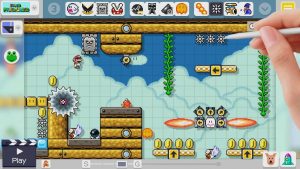
Dozens of unofficial Mario level editors can be found online if you know where to look, but Nintendo cutting out the middle-man resulted in a game with far more versatility and possibilities than any of the unofficial editors could offer, not to mention a thriving community where you could share your creations and get feedback. Plus, as a Wii U title, the Tablet Controller’s touch screen made placing a multitude of sprites a snap. Sure, you may have been limited to “only” creating Mario levels, but Mario platformers are popular for a reason, and the amount of creativity that users displayed despite these limitations were nothing short of amazing.
Of course, astute readers who know their gaming history may have caught what the game’s biggest roadblock was in that last paragraph: It was a Wii U title. Even though Super Mario Maker got glowing reviews and sold millions of copies, the Wii U’s audience was not large enough for it to make a bigger impact. Thankfully, Nintendo knew a good idea when they saw one, and a sequel, Super Mario Maker 2, is due out on the much more successful Nintendo Switch this June. Feel free to play that game on your TV while you’re playing The Endless Mission on your computer!
In Conclusion…
That about wraps things up for the history of Games about Making Games. Check back next week as we look at games that set their sights a bit higher and consider making games to be just the tip of the iceberg!
Image Sources: Wikipedia, Engadget, xgn.nl, Simone Di Giorgi, MarioWiki, Kotaku, VistaPointe, Vice
BACK TO DEV BLOG

